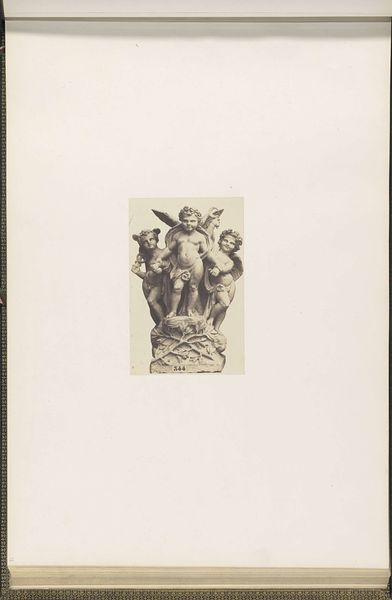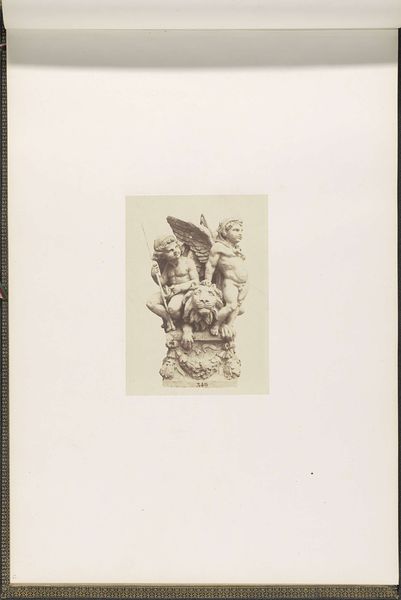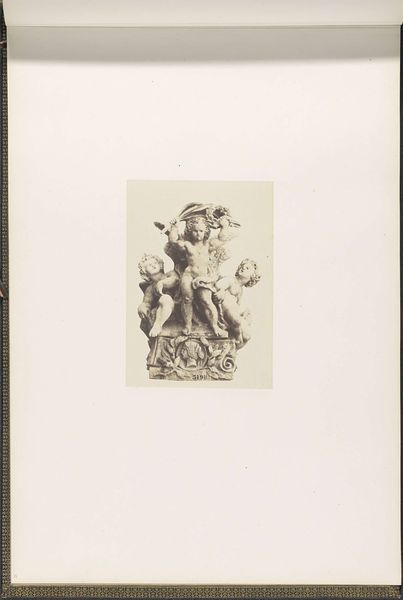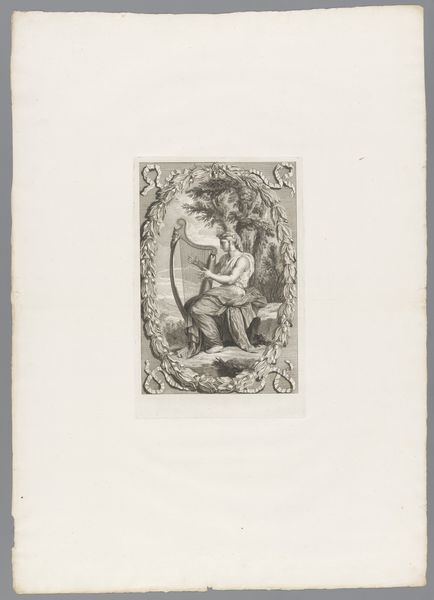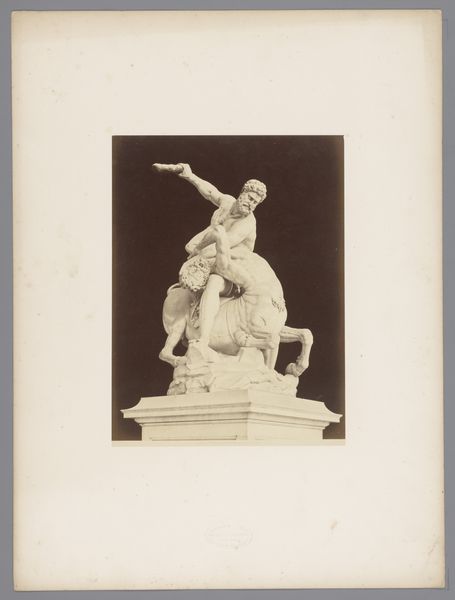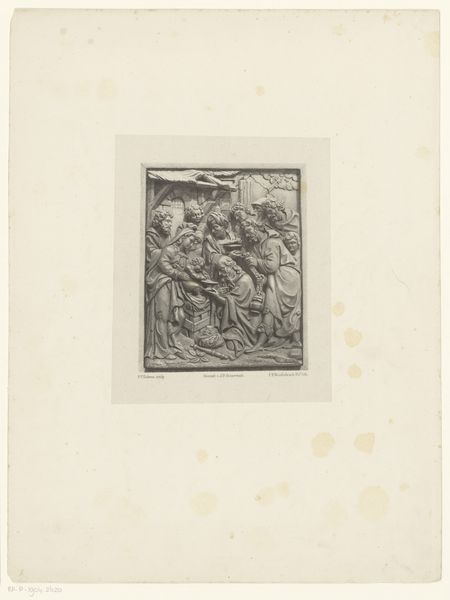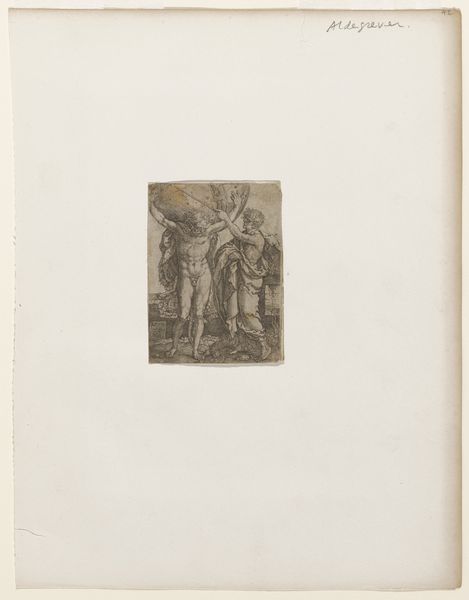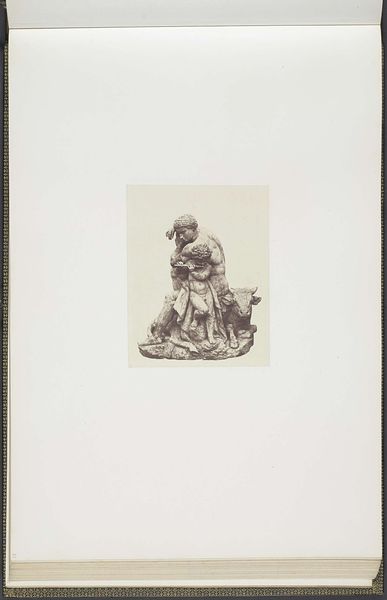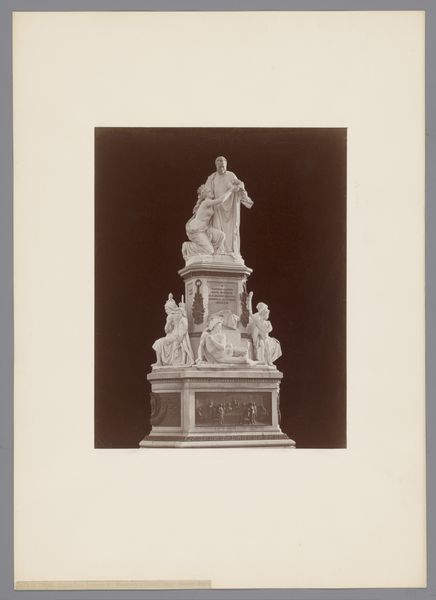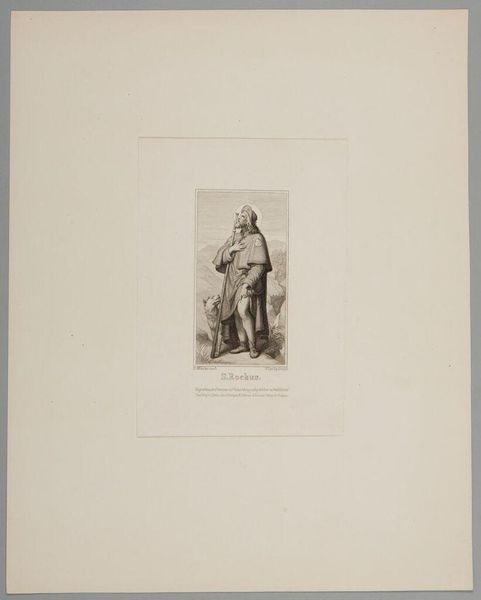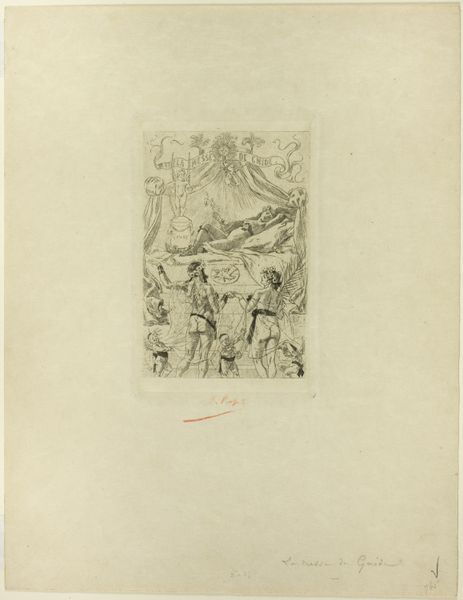
Gipsmodel voor beeldhouwwerk op het Palais du Louvre: "L'Abondance" door Louis Léopold Chambard c. 1855 - 1857
0:00
0:00
edouardbaldus
Rijksmuseum
#
pencil drawn
#
photo of handprinted image
#
toned paper
#
light pencil work
#
ink paper printed
#
pencil sketch
#
ink drawing experimentation
#
watercolour illustration
#
tonal art
#
watercolor
Dimensions: height 376 mm, width 523 mm
Copyright: Rijks Museum: Open Domain
Editor: This is an albumen print from a negative by Edouard Baldus, titled "Gipsmodel voor beeldhouwwerk op het Palais du Louvre: 'L'Abondance' door Louis Léopold Chambard," created around 1855-1857. The photographic print depicts three cherubic figures. It seems like a photograph OF a sculpture rather than the sculpture itself? How does the context of photography affect how we view the sculpted "abundance"? Curator: That's an insightful observation. Consider Baldus’s commission. He was often employed to document public works and architectural projects. The Palais du Louvre was a major symbol of Imperial power, a reflection of France's aspirations for cultural dominance, especially during the Second Empire. Editor: So, the photograph is more than just documentation? Curator: Precisely. It also functions as promotion. Photographs like these would circulate widely, disseminating a particular vision of French art and progress. Note how Baldus’s photograph mimics classical compositions; this legitimizes both Chambard's sculpture and the regime's ambitions through direct connection to established artistic values. Is this about art, or about communicating status? Editor: It is interesting how photography at that time could make artwork more available to different social classes; I would guess very few people had the opportunity to travel and see such displays. But wouldn’t it also take away from the 'aura' of a monumental artwork by reducing it to the same status as everyday mundane things? Curator: That’s a good question, which was a real anxiety at the time. However, it depends on its intended function, public perception, and, more often than not, economics. We also cannot undermine the social impact art images possess despite reproduction. The fact that Baldus has arranged the lighting so perfectly does not feel, to me, like 'everyday mundane'. What do you think? Editor: You're right. By documenting the process and the final piece, the photograph elevates the sculpture while subtly promoting the French Empire. This blend of art, politics, and photographic skill really changes my perception. Curator: And, it’s vital to understanding the intersection between art, national identity, and power. These seemingly benign images of art have a specific socio-political purpose.
Comments
No comments
Be the first to comment and join the conversation on the ultimate creative platform.
